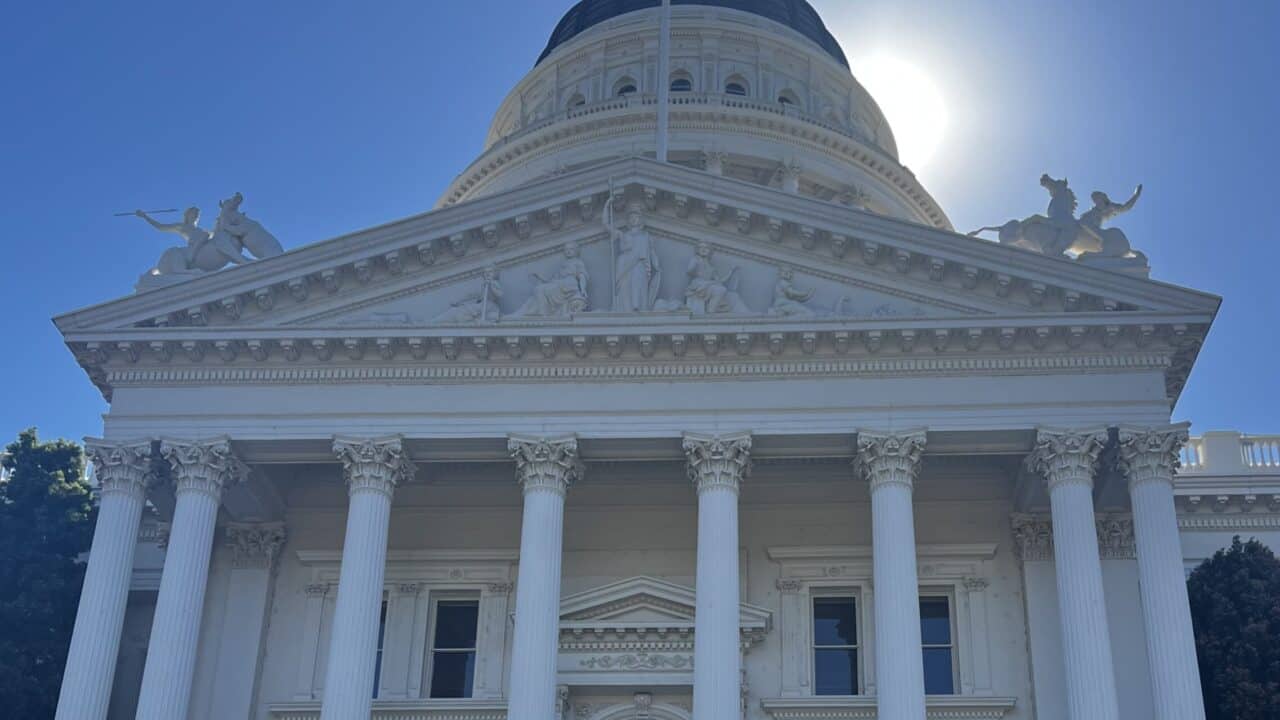
After squandering a $100 billion surplus last year, California Democrats are returning to Sacramento with a big problem on their hands. The Golden State now faces a budget shortfall of over $68 billion in the 2024-2025 fiscal year, according to a new report.
The difference between the state’s collections and budget is enormous: To make up the difference, the state would have to tax every man, woman, and child in California an amount equivalent to 5 months of grocery bills. And even if Gavin Newsom, inspired by Ridley Scott’s new Napoleon biopic, decided to annex neighboring Nevada and Utah and direct their entire state revenues into Golden State coffers, California would still have the largest deficit in the country.
This development, even for California, is astonishing. As a percentage of GDP, the shortfall is almost ten times larger than that of the state with the second largest gap, New York. Only four other states have announced a budget deficit for 2024, and of those, only New York projects losses exceeding $1 billion. Meanwhile, 25 states, including famously irresponsible debtors like Illinois and New Jersey, have announced budget surpluses for 2024.
Why is California in such dire straits? The answer lies in the state’s exorbitant and poorly structured tax regime.
Newsom and other California politicians have long touted the state’s ultra-progressive income tax system, which they say justly targets greedy Silicon Valley billionaires. Whenever the state needs to raise funds for one of its fiscal black holes, like its failed high-speed rail initiative or its floundering homelessness program, the conversation inevitably turns to more of the same: driving top-level tax rates higher and higher. The problem with this system, aside from disincentivizing the entrepreneurship and innovation that built the state’s economy, is that it creates an extremely volatile government budget.
The fundamental problem is that personal income becomes less and less certain as workers move up the pay ladder. Middle-class taxpayers have relatively stable earnings, meaning that states with a broad, economically diverse tax base can reliably predict their revenue and make decisions accordingly. When a state raises too much of its revenue by milking the wealthy, however, that stability erodes. The technology sector entrepreneurs and financiers that make up California’s 1% don’t have predictable incomes. Some years, the economy booms, stocks gain ground, and the “rich get richer.” But in other years, capital gains fall, top level incomes stagnate – and the state’s coffers take an unexpected hit.
The state has recognized its budget volatility for years, but the magnitude of 2024’s shortfall has caught the state’s planners flat-footed. Just last January, Californian economists woefully underestimated the state’s budgetary risk in a non-recessionary period, and the state has just $37.2 billion in the “rainy day fund” that serves as its main line of defense against catastrophic deficits.
California’s current situation paints a frightening portrait of what happens to states that rely too much on rich taxpayers, whose incomes vary wildly year-to-year and who can easily leave the state when taxes get too high. This year’s $68 billion gap, however, is merely the beginning. Stocks, especially tech stocks, rose dramatically in 2023, and the United States is showing no immediate signs of recession. How badly might California suffer if tech stocks lose value, high-level incomes atrophy, and capital gains tailspin?
Real economic downturns, like the Great Recession, rip holes in even the most solvent states’ budgets. If California cannot arrive at a more responsible budget and tax structure before the next recession, they may soon find themselves dangling from the edge of a very steep fiscal cliff.

